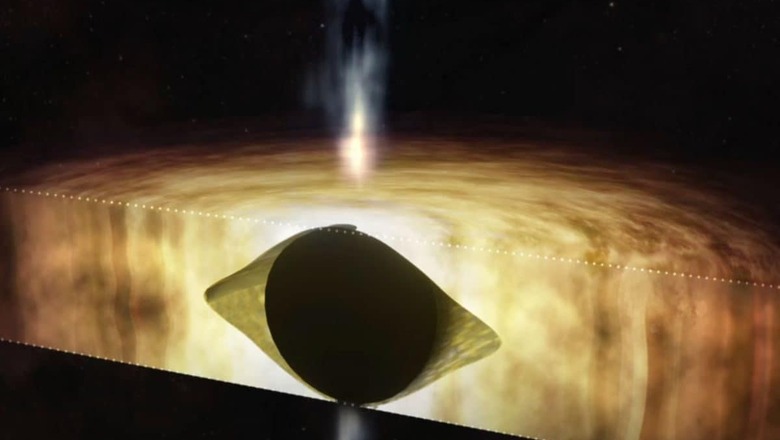
views
A new study by the National Aeronautics and Space Administration (NASA) suggests that the supermassive black hole at the centre of our galaxy called Sagittarius A* (abbreviated as Sgr A*) is spinning so fast that it is warping the spacetime, which is, time and the three dimensions of space that make it appear more like a football. These results were made using the data from NASA’s Chandra X-ray Observatory and the National Science Foundation’s Karl G Jansky Very Large Array (VLA).
Black holes have two fundamental properties: their spin (how quickly they rotate) and their mass (how much they weigh). Determining either of these two fundamental values, scientists get to know about any black hole and how it behaves. Astronomers call this giant black hole Sagittarius A*, which is situated about 26,000 light-years away from Earth in the center of our Milky way.
A team of researchers applied a new method that utilises X-ray and radio data to calculate how quickly Sgr A* spins depending on how material flows towards and away from the black hole. They found Sgr A* They discovered that Sgr A* spins with an angular velocity equal to the number of revolutions per second, which is around 60 percent of the maximum possible value, and an angular momentum of about 90 percent of the maximum possible value.
Earlier, different astronomers made several other estimates of Sagittarius A*’s rotation speed using different techniques, with results ranging from Sagittarius A* not spinning at all to spinning at almost the maximum rate. Looking at the spinning black hole from the side, as depicted in this illustration, the spacetime is shaped like a football. The faster the spin, the flatter the football.
A black hole’s spin can be an important source of energy. When the spin energy of spinning supermassive black holes is removed, collimated outflows such as jets are produced, implying that there is at least some matter in the vicinity of the black hole. Due to low fuel orbiting Sgr A*, this black hole has been relatively quiet in recent millennia, with relatively weak jets. This study, however, demonstrates that this might change if the amount of material in the vicinity of Sgr A* increases.
To determine the spin of Sgr A*, the authors employed an experimentally based methodology referred to as the “outflow method". This method specifies the relationship between the spin of the black hole and its mass, as well as the properties of the matter around the black hole, and the outflow properties. The collimated outflow generates radio waves, whereas the X-ray emission is caused by the disc of gas encircling the black hole. Using this technique, researchers combined data from the VLA and Chandra with an independent estimate of the black hole’s mass from other telescopes to confine its spin.
This illustration shows a cross-section of Sagittarius A*. In the middle, the spinning, circular black hole is seen from the side in black and the shape of the surrounding spacetime, pictured in shades of dark yellow, appears to have been crushed down, thus resembling the shape of a football. The swirling gas that surrounds Sagittarius A* is depicted on each side of the black hole within a rectangular-shaped dotted line, suggesting that the image represents a cross-section view. A myriad of faint stars can be seen in the backdrop, peeking out from beneath brooding, dark red, unclear clouds.




















Comments
0 comment